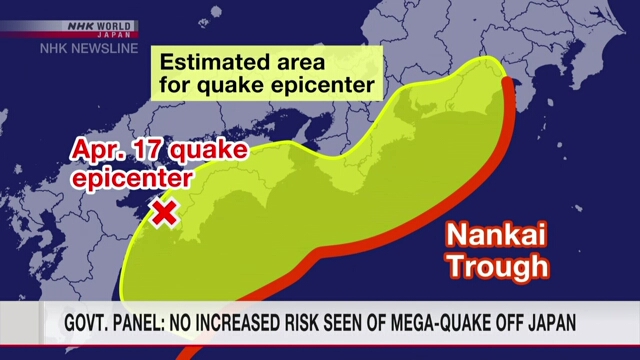
A Japanese government panel says it has observed no particular changes that indicate an increased risk of a huge earthquake occurring along an undersea trough just south of Japan’s main island of Honshu.
The Earthquake Research Committee held an ad hoc meeting on Thursday after a magnitude 6.6 quake struck the Bungo Channel, a strait between the western islands of Kyushu and Shikoku, late on Wednesday.
Seismologists estimate that there is a 70 to 80 percent probability that a magnitude 8 to 9 quake will occur along the Nankai Trough in the Pacific Ocean off central to western Japan within the next 30 years.
The Bungo Channel is located along the western edge of a region where the Nankai Trough quake is expected to strike.
The committee analyzed Wednesday’s earthquake, and said seismic activity remains active in the channel. However, it said no significant changes in observational data on crustal movements in or around the strait have been detected.
The committee also noted that experts have observed small-scale seismic activity, known as low-frequency earthquakes, in and near the focus of Wednesday’s quake since around April 11. It explained the phenomenon is not unusual in the area, however, and that scientists have not discovered any changes to the activity before or after the quake.
The committee said the quake struck in the expected hypocentral region of the Nankai Trough quake, but concluded that it has not seen any particular changes that suggest the likelihood of a mega-quake occurring has heightened.
University of Tokyo Professor Emeritus Hirata Naoshi, who chairs the committee, says people should not be complacent about the assessment as the Nankai Trough quake is very likely to take place without warning.
He says that they should prepare for a giant quake by improving the quake-resistance of their homes while bearing in mind that such a quake could occur anytime.
